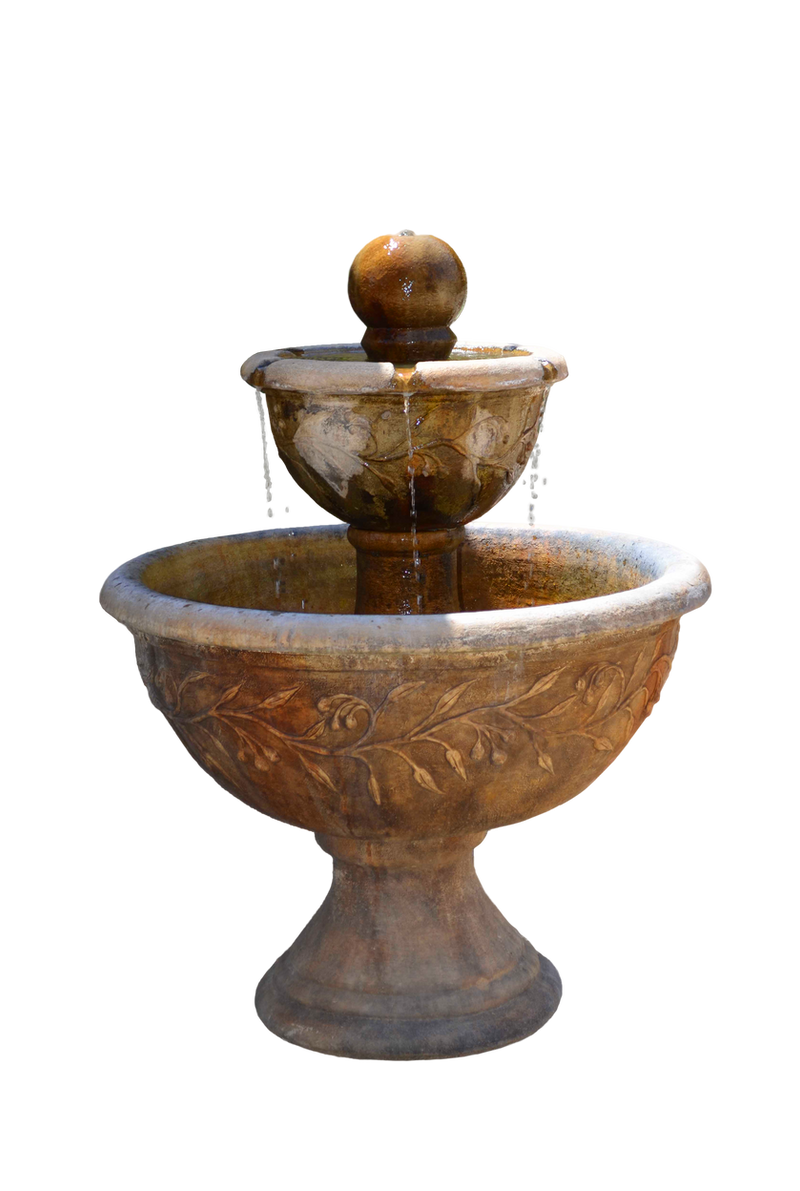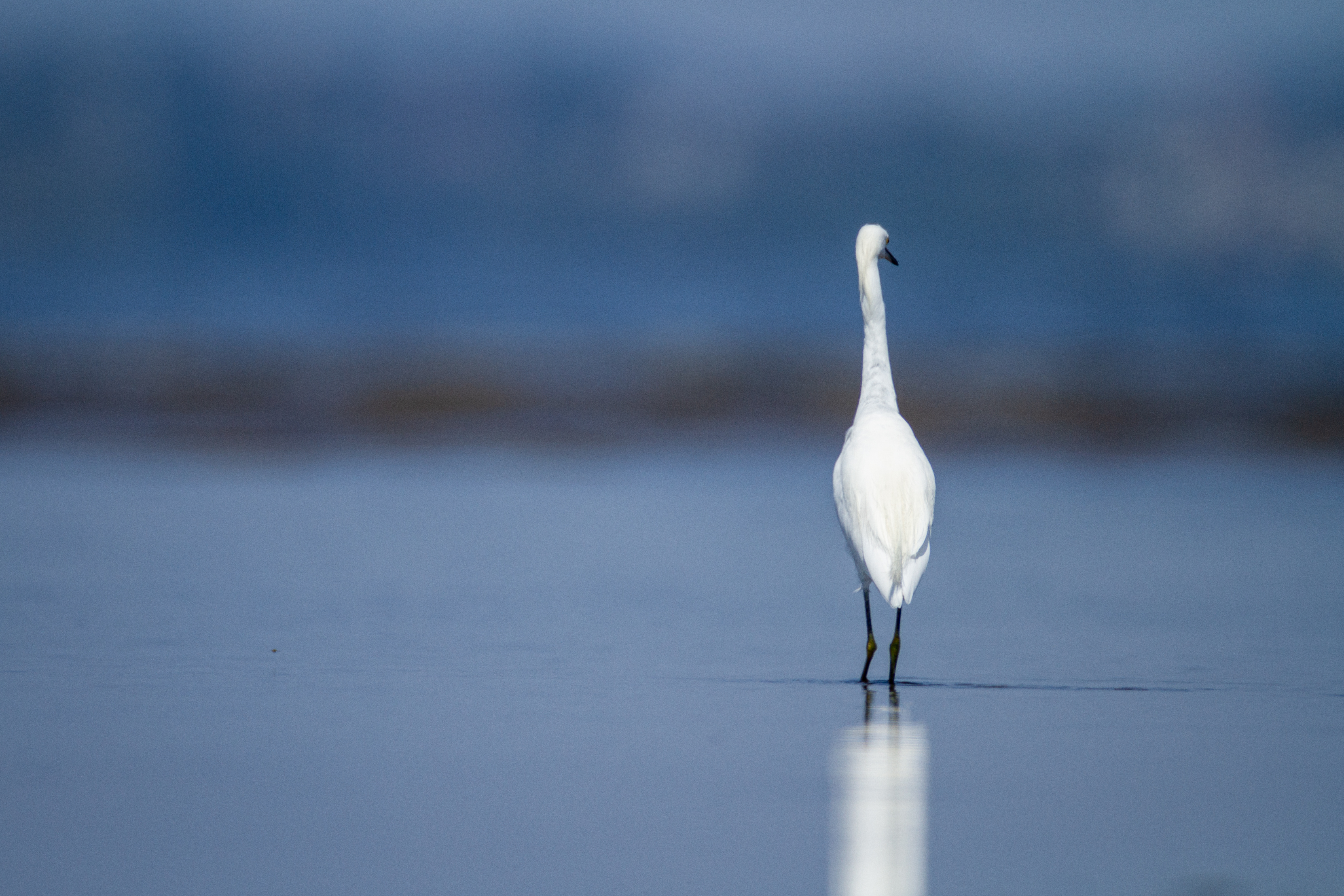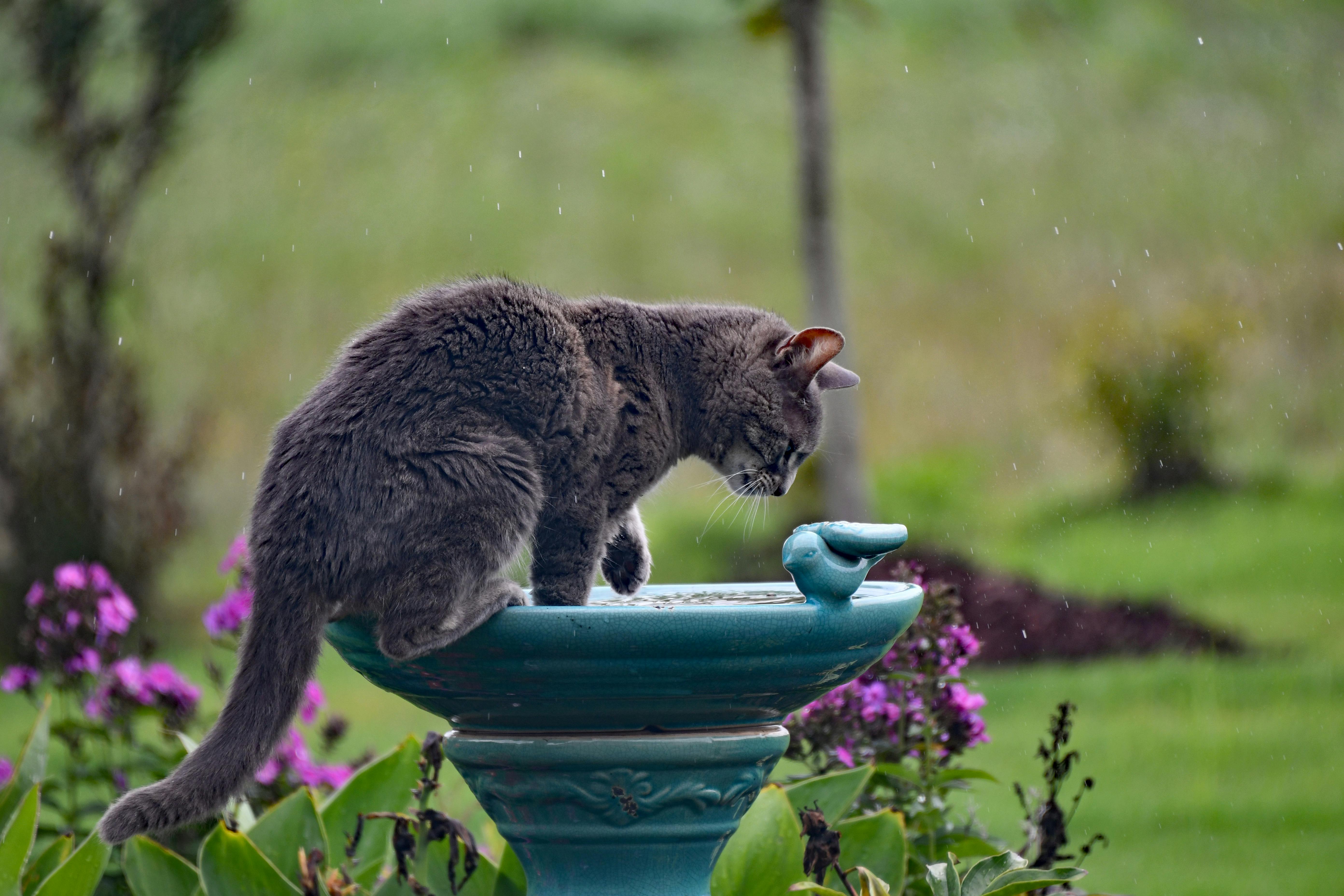Introduction

Bird baths are essential watering stations that provide clean and fresh water for birds and other wildlife. They serve as a crucial resource, especially in areas where natural water sources may be scarce or inaccessible. By offering a bird bath with clean water, you create a welcoming oasis that attracts a diverse range of bird species to your yard. Additionally, bird baths cater to the needs of other wildlife, such as squirrels, butterflies, and bees, which may visit to drink or cool off on hot days.
Maintaining the cleanliness and hygiene of bird baths is of utmost importance. Stagnant or dirty water can become a breeding ground for harmful bacteria, parasites, and mosquitoes, posing health risks to birds. Regular cleaning and refilling of the bird bath are necessary to ensure the water remains inviting and safe. By taking these steps, you contribute to the overall well-being of the avian population.
When selecting a bird bath, consider its size, depth, and design. Many bird species prefer shallow baths, allowing them to stand comfortably while bathing. Providing a gradual slope or textured surfaces within the basin offers better footing for birds and reduces the risk of slipping. Taking these factors into account ensures that the bird bath is suitable for a wide variety of avian visitors.
Equally important is the strategic placement of the bird bath. Positioning it near trees, shrubs, or dense vegetation provides a sense of security for birds, offering protection from predators and allowing them to take cover quickly if needed. Moreover, placing the bird bath in a visible and accessible location within your yard enhances the likelihood of attracting a diverse array of bird species.
Enhancing Bird Bath Water

To enhance the bird bath water and make it more appealing to birds, there are a few items you can add:
Rocks and Gravel

Adding rocks and gravel to the bird bath serves multiple purposes. They create a shallow area within the water, allowing birds of different sizes to comfortably bathe and drink. Some birds prefer shallow water, and providing this option can attract a wider variety of species. Rocks and gravel also offer a natural perching spot for birds to rest, preen their feathers, and observe their surroundings.
Additionally, rocks and gravel act as a filtration system, helping to keep the water clean. They provide surfaces for beneficial bacteria to grow, aiding in breaking down organic matter and reducing algae growth.
Aquatic Plants

Introducing aquatic plants to the bird bath offers numerous advantages. These plants provide a source of natural shelter and protection for birds, creating a more inviting environment. They also serve as a perch for birds to rest and groom themselves while partially submerged in the water.
Aquatic plants enhance the aesthetic appeal of the bird bath, making it visually pleasing for both birds and human observers. Furthermore, they contribute to maintaining water quality by absorbing excess nutrients and filtering out contaminants, helping to balance the ecosystem within the bird bath and reduce the growth of algae.
Including a variety of aquatic plants, such as water lilies, water hyacinths, and duckweed, can provide different levels of coverage and add visual interest to the bird bath.
By incorporating rocks, gravel, and aquatic plants into the bird bath water, you can create an inviting and beneficial environment for birds and other wildlife. The combination of these elements caters to the birds’ needs for bathing and drinking while enhancing the overall aesthetics and cleanliness of the bird bath.
Remember to regularly clean and refill the bird bath to ensure the health and well-being of the birds.
Cleaning the Bird Bath

Properly maintaining and cleaning your bird bath is crucial for creating a healthy and inviting environment for birds and other wildlife. Regular cleaning prevents the growth of algae, bacteria, and mosquitoes, providing clean water for the feathered visitors in your yard. Follow these instructions to effectively clean your bird bath:
-
Empty the bird bath completely: Start by emptying the water from the bird bath. Removing the stagnant water eliminates the breeding ground for harmful organisms and helps maintain cleanliness.
-
Protective gear: Before cleaning, wear gloves and eyewear to protect yourself from bacteria or cleaning solutions.
-
Scrub the basin: Use a stiff-bristled brush or sponge to scrub the basin, removing debris, algae, or stains. Pay special attention to corners and edges where dirt accumulates.
-
Natural cleaning solution for tough stains: For stubborn stains or mineral deposits, create a natural cleaning solution using equal parts white vinegar and water. Apply the mixture to the stains, let it sit for a few minutes, and then scrub with the brush or sponge. Vinegar effectively removes stubborn buildup.
-
Thoroughly rinse: After scrubbing, rinse the bird bath thoroughly with clean water to remove any residue from the cleaning solution or loosened debris.
-
Consider using bleach for disinfection: If you have observed sick birds using the bath or there has been an outbreak of avian diseases in your area, use a mild bleach solution for disinfection. Mix one part bleach with nine parts water, apply it to the bird bath, let it sit for a few minutes, and then thoroughly rinse to remove all traces of bleach.
-
Clean parts and accessories: Clean decorative elements or fountain mechanisms separately using appropriate methods. Rinse them thoroughly before reassembling the bird bath.
By regularly following these cleaning steps, you maintain a hygienic bird bath that promotes the health and well-being of the birds visiting your yard. Remember to clean the bird bath every few days and adjust the frequency based on environmental factors like temperature and bird activity.
Choosing the Right Size Bird Bath

Selecting the ideal size bird bath for your outdoor space requires careful consideration. The size of the bird bath plays a crucial role in attracting birds and providing them with a comfortable bathing experience. Here are some key tips to help you choose the right size:
Adequate Depth: Birds prefer shallow water for bathing, around 1-3 inches deep. A shallow basin allows birds to comfortably immerse themselves while still being able to touch the bottom.
Diameter: A wider basin provides ample space for birds to move around and splash water, enhancing their bathing experience. A larger diameter also accommodates multiple birds simultaneously, creating a lively scene in your yard. Aim for a minimum diameter of 18-24 inches, but larger baths can attract a greater variety of bird species.
Stability: Ensure the bird bath remains upright and stable, especially in windy areas or if larger bird species frequent your yard. Choose a bird bath with a sturdy base or consider anchoring it to the ground to prevent accidents and provide a safe environment for the birds.
Height: The bird bath should be elevated enough to give birds a clear view of their surroundings, allowing them to spot potential predators while bathing. A height of 2-3 feet off the ground is generally suitable and helps keep the bath out of reach of ground-dwelling predators like cats.
Accessibility: Birds prefer bird baths with a gradual slope or textured surface for better footing while entering and exiting the water. Avoid steep sides or slippery surfaces that may hinder birds’ access to the water. Providing easy accessibility ensures that birds feel safe and confident while using the bird bath.
By considering these guidelines and selecting a bird bath that meets the requirements of adequate depth, diameter, stability, height, and accessibility, you can create a welcoming and inviting space for birds to enjoy a refreshing bath in your yard. Remember, choosing the right size bird bath is an essential step in attracting a diverse range of bird species and promoting their well-being.
In the next section, we will provide helpful advice for positioning the bird bath in the optimal location in your yard.
Placement of the Bird Bath

The placement of your bird bath is crucial for attracting birds and providing them with a safe and inviting environment. Here are some tips to help you position your bird bath effectively:
Visibility and Accessibility
![]()
Choose a prominent location for your bird bath that is easily visible from both the ground and the air. Birds rely on their keen eyesight to find sources of water, so make sure it stands out. Consider placing it near open spaces where birds can spot it while flying overhead.
Proximity to Trees and Shrubs
To create a more appealing environment for birds, place the bird bath near trees or shrubs. These natural elements provide perching spots and shelter, allowing birds to rest and preen after bathing.
Predators and Disturbances
While providing shelter is important, avoid placing the bird bath too close to dense foliage or bushes where predators like cats can hide. Position it in a quiet and peaceful area, away from high human traffic and noise, to create a safe haven for birds.
Sunlight and Shade
Choose a location that offers a good balance of sunlight and shade. Direct sunlight all day can heat up the water quickly, making it uncomfortable for birds. Opt for a spot that provides some shade during the hottest parts of the day, maintaining the water at a cooler and more refreshing temperature.
Falling Debris
Although trees provide shade and perching spots, avoid placing the bird bath directly under them to minimize debris. Falling leaves, twigs, or sap can dirty the water and require additional maintenance. Position the bird bath at a reasonable distance from trees to reduce the impact of debris while still benefiting from their shade.
Stability and Level Surface
Ensure that the bird bath is placed on a stable and level surface to prevent tipping or wobbling. This not only provides a reliable platform for birds but also prevents accidents or damage to the bird bath itself. Regularly check and adjust the placement if necessary to maintain stability.
Observe Local Birds
Observe the behavior of local birds to determine the best placement for your bird bath. Pay attention to where they perch, fly, and gather. By understanding their natural patterns, you can position the bird bath in a location that is most appealing to the birds in your area.
Remember to regularly clean and change the water in the bird bath to maintain hygiene and keep it fresh for the birds. With proper placement and maintenance, your bird bath will become a popular and vital resource for the birds in your yard.
Conclusion

In conclusion, providing clean, fresh water in bird baths is crucial for the well-being and survival of birds and other wildlife. Throughout this blog post, we have explored various aspects of creating an ideal bird bath environment. Let’s recap the key points discussed and emphasize the importance of taking action to provide clean water for our feathered friends.
Importance of Water for Birds

Birds rely on water not only for drinking but also for bathing and maintaining their feathers. A bird bath serves as a vital resource, particularly in arid or urban environments where natural water sources may be scarce. By offering a clean and accessible water supply, we can support the health, hydration, and daily activities of our avian visitors.
Elements to Consider in Bird Bath Water
When filling a bird bath, it is beneficial to include certain elements that enhance its appeal and functionality. Adding rocks, gravel, or aquatic plants can provide birds with perching spots, footholds, and a naturalistic environment. These elements also promote a gradual water depth, allowing birds of various sizes to comfortably use the bath.
The Significance of Clean Water

Maintaining clean water in the bird bath is paramount. Dirty or contaminated water can pose health risks to birds, potentially leading to the spread of diseases. Regularly changing the water and scrubbing the basin will help prevent the growth of algae, bacteria, and other harmful substances. By prioritizing cleanliness, we can create a safer and healthier bathing environment for birds.
Placement and Size of the Bird Bath
Selecting the right size and positioning the bird bath strategically are essential considerations. Choosing a bath that accommodates the needs of the bird species in your area ensures optimal usage. Additionally, placing the bird bath in a safe and visible location, away from potential predators and with easy access for birds, maximizes its effectiveness.
Taking Action for Birds and Wildlife
Now that you are armed with knowledge about creating a suitable bird bath, it’s time to take action. Here are some recommendations to provide clean water for birds and other wildlife:
-
Maintain a consistent water level: Ensure the water depth is appropriate for birds to bathe and drink comfortably. Regularly monitor and replenish the water to keep it at an optimal level.
-
Clean the bird bath frequently: Establish a cleaning routine to prevent the buildup of algae and bacteria. Scrub the basin with a brush and replace the water at least once a week, or more often during hot weather or heavy use.
-
Consider additional features: Enhance the bird bath’s functionality by incorporating accessories like rocks or branches, providing birds with perching spots and preventing accidental drowning.
-
Spread the word: Share your knowledge about the importance of clean water for birds with family, friends, and neighbors. Encourage them to create bird-friendly habitats in their own yards.
By implementing these actions, you can make a positive impact on the well-being of birds and contribute to the overall conservation of wildlife in your area.
In conclusion, let’s commit to providing clean, fresh water in our bird baths. By doing so, we not only offer a lifeline to our feathered friends but also create a haven for observing their beauty and enjoying the wonders of nature in our own backyards. Together, let’s make a difference for birds and other wildlife by ensuring they have access to clean water every day.
Frequently Asked Questions
Frequently Asked Questions
Q1: What should I put in my bird bath water?

A1: To enhance your bird bath water, you can add rocks and gravel as they create shallow areas for birds to comfortably bathe and drink. Aquatic plants are also beneficial, providing natural shelter, perching spots, and helping to maintain water quality by absorbing excess nutrients.
Q2: How often should I change the water in my bird bath?
A2: It is recommended to change the water in your bird bath at least once a week. However, during hot weather or periods of heavy bird activity, you may need to change it more frequently to ensure cleanliness and freshness.
Q3: Can I use tap water in my bird bath?

A3: Yes, tap water is generally safe to use in a bird bath. However, if your tap water is treated with chemicals like chlorine, it is advisable to let the water sit for a few hours before adding it to the bird bath to allow the chlorine to dissipate.
Q4: Can I use a bird bath heater in winter to keep the water from freezing?
A4: Yes, using a bird bath heater is a great way to provide birds with access to water during freezing temperatures. A bird bath heater prevents the water from freezing entirely, ensuring a constant water source for birds.
Q5: How do I keep mosquitoes away from my bird bath?
A5: To keep mosquitoes away from your bird bath, regularly change the water to prevent stagnant conditions. You can also add a small fountain or dripper to keep the water moving, as mosquitoes prefer still water for breeding. Additionally, consider using mosquito dunks or adding a few drops of vegetable oil to the water surface, which creates a thin film and prevents mosquito larvae from breathing.

Leave a Reply